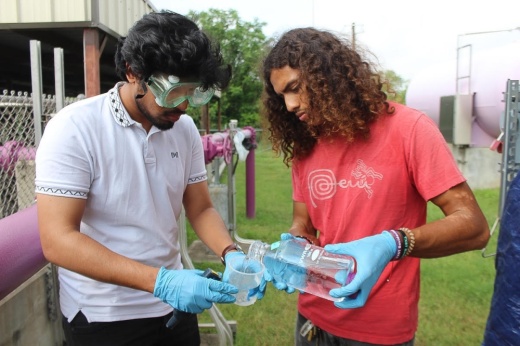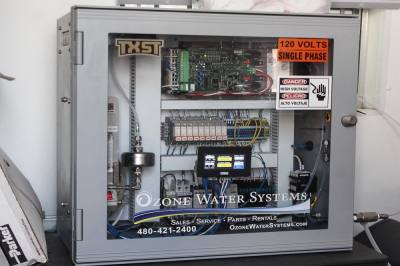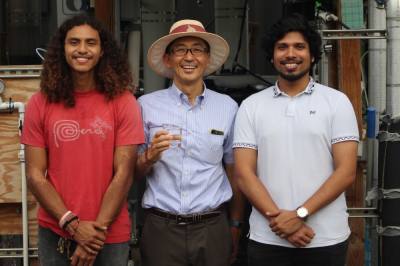DPR has the ability to help reduce or potentially eliminate groundwater withdrawal from the Edwards Aquifer and Canyon Lake, as well as the wastewater discharge to San Marcos River, according to assistant engineering professor Keisuke Ikehata.
The background
The pilot project began in 2020 after Ikehata received a $150,000 grant from the U.S. Department of the Interior’s Bureau of Reclamation.
That year, Ikehata and two of his graduate students—Carlos Espindola and Daniel Leontieff—worked together to design and build a DPR system. The trio added another member to their team—graduate student Rasha Khan —and began testing the system, which can create 1.5-2 gallons of drinkable water per minute.
“If we run it in 24 hours, we can make about 1,000 gallons of drinkable water,” Ikehata said.
At the end of 2022, the research team deployed their DPR system to the San Marcos Wastewater Treatment Plant.
What’s being done
The research team has been examining key parameters in wastewater, such as pathogens and disinfectant byproducts that should not be in purified drinking water. The team also analyzes aesthetics, such as taste, odor and color, in the purified water from their DPR system.
Ikehata explained that treated wastewater is “good enough” to be discharged back into the river, but it is not good enough for people to drink, which is where an advanced water purification system comes into play.
The DPR system uses ozone, biological activated carbon and membranes filters, reverse osmosis, and ultraviolet reactors to remove more 99.99% of pathogens as well as more than 99% of harmful chemicals in treated wastewater.
“We want to make our purified water very tasty and appealing,” Ikehata said.
Ikehata emphasized that DPR would be more efficient and effective than conventional wastewater treatment methods; however, it is more expensive.
What else?
One city in West Texas is working toward designing and building an advanced water purification facility to supplement the city’s drinking water supplies. Although a Central Texas utility district using DPR has yet to be seen, Wichita Falls used a DPR facility to help supplement water during a historic drought back in 2014.
Stay tuned
Although he has not published their research outcomes quite yet, Ikehata and his students have attended conferences to share what they have learned thus far, and overall feedback has been positive.
“A number of municipalities, including [the] city of San Marcos, are very interested in doing DPR,” Ikehata said.
The team’s long-term goal is to provide sustainable, drought-resistant water resources for growing communities in Central Texas by reusing our own wastewater.
“Our research will ensure the safety of the purified water 100% of the time. At the same time, we want our water crystal clear, odorless and tasty,” Ikehata said.








